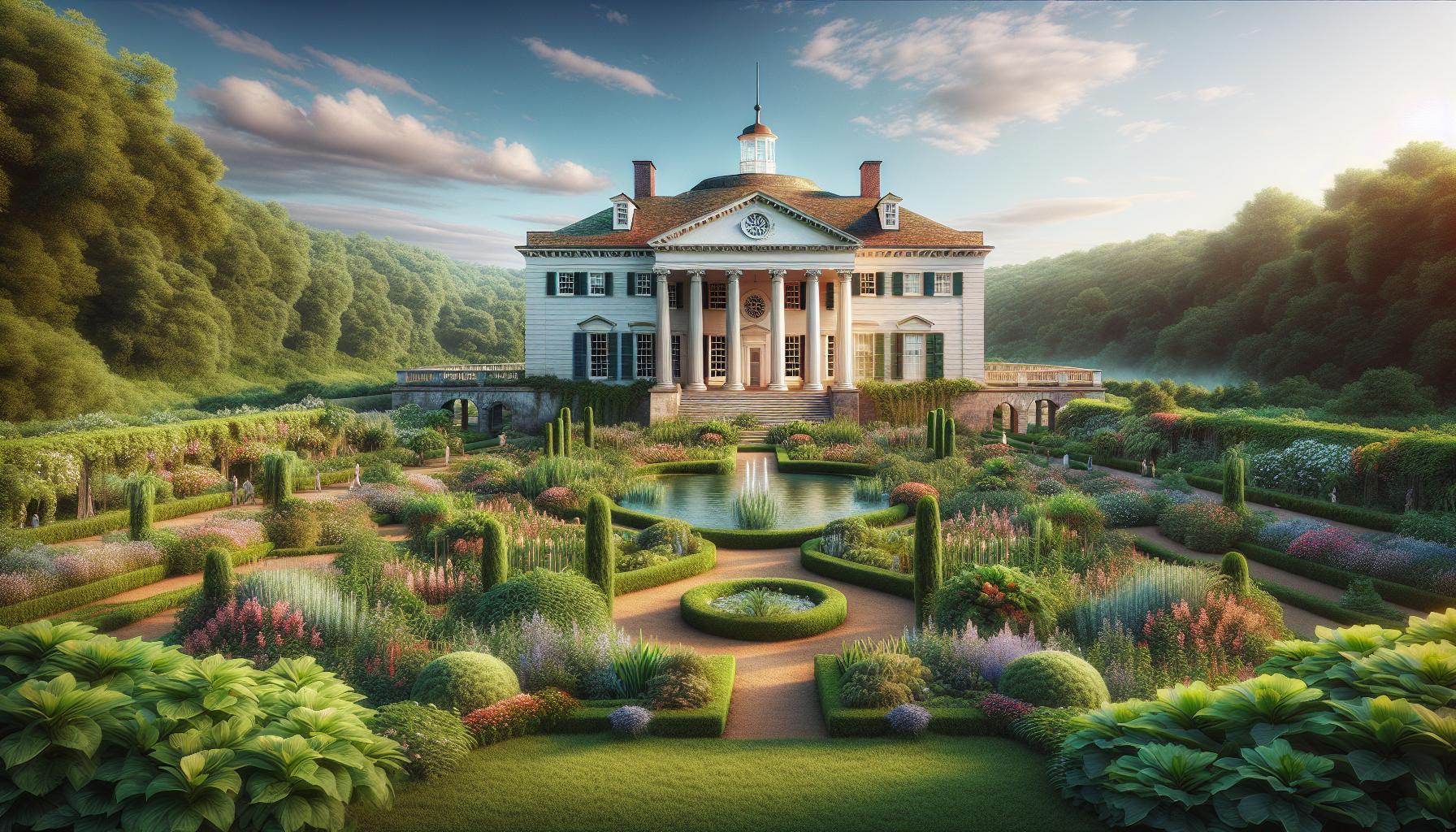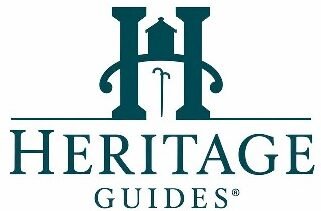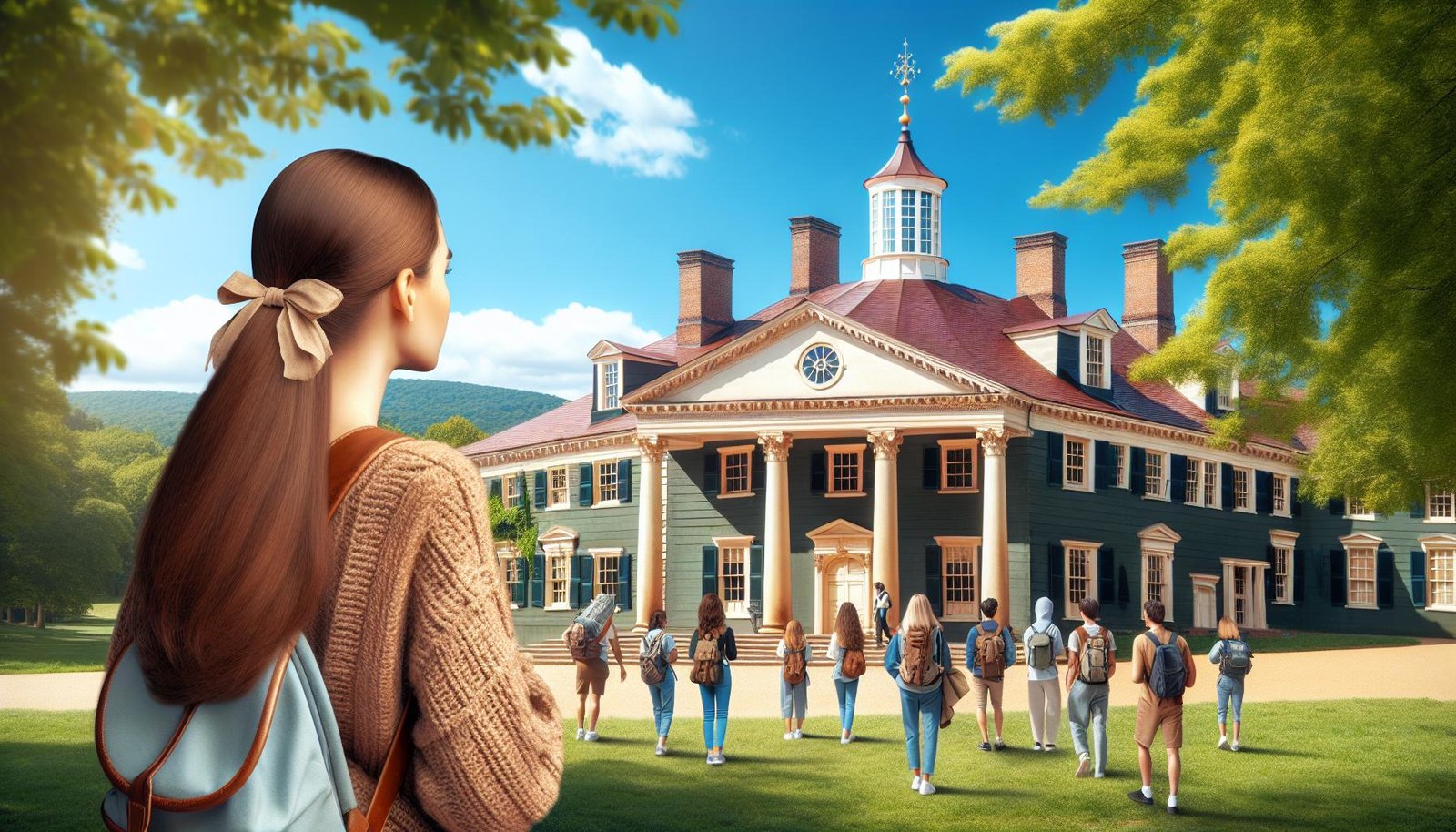As I embarked on my Presidential Heritage Tour, I couldn’t help but feel a sense of awe and excitement. The journey would take me through two iconic American landmarks: Mount Vernon and Washington D.C. These historic sites offer a unique glimpse into the life of our nation’s first president and the heart of American democracy.
Mount Vernon, George Washington’s beloved home, stands as a testament to his life and legacy. Meanwhile, Washington D.C., with its grand monuments and powerful institutions, showcases the enduring impact of his leadership. Together, these destinations provide an immersive experience that brings American history to life in ways that textbooks simply can’t match.
Planning Your Presidential Heritage Tour
Selecting Your Destinations
When planning a Presidential Heritage Tour, I recommend focusing on Mount Vernon and Washington D.C. These locations offer a comprehensive look into America’s early presidential history. Mount Vernon, George Washington’s estate, provides insight into his personal life, while Washington D.C. showcases the nation’s political foundations.
Mount Vernon Visit
Mount Vernon is located at 3200 Mount Vernon Memorial Highway, Mount Vernon, VA 22121. It’s open daily from 9:00 AM to 5:00 PM (April-October) and 9:00 AM to 4:00 PM (November-March). The estate offers:
- General admission tickets
- Timed mansion tours
- Private guided tours
I suggest reserving tickets online in advance, especially for mansion tours. Plan to spend at least 3 hours exploring the grounds, gardens, and outbuildings.
Washington D.C. Landmarks
In Washington D.C., key presidential heritage sites include:
- White House (1600 Pennsylvania Avenue NW)
- Lincoln Memorial (2 Lincoln Memorial Circle NW)
- Washington Monument (2 15th Street NW)
- Jefferson Memorial (701 East Basin Drive SW)
These landmarks are generally open 24/7, but visitor centers have specific hours. I recommend checking the National Park Service website for current information.
Transportation Options
For Mount Vernon:
- Drive: Ample parking available
- Public transport: Fairfax Connector bus from Huntington Metro station
- Bike: Rentals available in Alexandria
- Boat cruise: Potomac Riverboat Company offers seasonal tours
In Washington D.C.:
- Metro: Extensive subway system connecting major landmarks
- Capital Bikeshare: Bike rental stations throughout the city
- Walking: Many sites are within walking distance of each other
- Wear comfortable shoes for extensive walking
- Bring water, especially during summer months
- Allow ample time for security checks at major landmarks
- Consider purchasing a multi-attraction pass for savings
- Book guided tours for in-depth historical context
By carefully planning your Presidential Heritage Tour, you’ll create a memorable and educational experience exploring America’s early presidential history.
Exploring Mount Vernon: George Washington’s Estate

Mount Vernon, the historic home of George Washington, offers visitors a unique glimpse into the life of America’s first president. This magnificent estate, nestled along the banks of the Potomac River, provides a fascinating journey through early American history.
The Mansion and Gardens
The Mansion at Mount Vernon is currently undergoing a landmark preservation project to safeguard its original building fabric and ensure structural integrity. Due to this work, some rooms may be off-view, including the New Room, Servants’ Hall, and Kitchen. In November, all rooms in the Mansion will be closed to visitors.
Despite these temporary closures, I recommend taking a timed tour of the Mansion. It’s essential to make advance reservations to secure your desired tour time, especially on busy days. The tour provides invaluable insights into Washington’s life and the architectural features of this historic home.
The estate boasts four meticulously maintained gardens that showcase George Washington’s passion for horticulture and landscape design. I found strolling through these gardens to be a delightful experience, offering breathtaking views of the Potomac River. Each garden tells a unique story about Washington’s agricultural interests and the estate’s self-sufficiency.
Washington’s Tomb
Located on the grounds of Mount Vernon, Washington’s Tomb is a solemn and reverent site. The current tomb, completed in 1831, houses the remains of George and Martha Washington. I recommend paying your respects at this historic site, which serves as a powerful reminder of Washington’s enduring legacy.
Museum and Education Center
The Museum and Education Center at Mount Vernon offers an immersive experience into the life and times of George Washington. With interactive exhibits, artifacts, and multimedia presentations, I found it to be an excellent resource for deepening my understanding of Washington’s role in shaping the nation.
- Purchase tickets online in advance to secure your preferred tour time.
- Wear comfortable shoes for walking on uneven terrain.
- Allow at least 3-4 hours to fully explore the estate.
- Check the website for any temporary closures or special events before your visit.
Discovering Washington D.C.’s Presidential Sites
Washington D.C. is a treasure trove of presidential history, offering visitors a chance to explore iconic landmarks that have shaped America’s past and present. I’ll guide you through some of the most significant presidential sites in the nation’s capital.
The White House
Location: 1600 Pennsylvania Avenue NW, Washington, D.C. 20500
Opening Hours: Public tours are available Tuesday through Saturday from 8:00 AM to 12:30 PM, excluding federal holidays.
Amenities/Facilities: Visitor Center, restrooms, gift shop
Description: The White House, official residence and workplace of the U.S. President, is a symbol of American democracy. Its neoclassical architecture and rich history make it a must-visit landmark.
Visitor Tips:
- Request tour tickets through your congressional representative at least 21 days in advance
- Bring a valid government-issued photo ID
- No storage facilities available, so travel light
- Photography is prohibited inside the White House
Lincoln Memorial
Location: 2 Lincoln Memorial Circle NW, Washington, D.C. 20002
Opening Hours: Open 24 hours a day, 365 days a year
Amenities/Facilities: Restrooms, bookstore, parking nearby
Description: This iconic memorial honors the 16th U.S. President, Abraham Lincoln. The 19-foot marble statue of Lincoln sits within a temple-like structure, overlooking the Reflecting Pool and Washington Monument.
Visitor Tips:
- Visit at night for a less crowded, dramatically lit experience
- Climb the steps for a panoramic view of the National Mall
- Read Lincoln’s famous speeches inscribed on the walls
Jefferson Memorial
Location: 16 E Basin Dr SW, Washington, D.C. 20242
Opening Hours: Open 24 hours a day, 365 days a year
Amenities/Facilities: Restrooms, bookstore, food kiosk (seasonal)
Description: This neoclassical monument pays tribute to Thomas Jefferson, the third U.S. President and principal author of the Declaration of Independence. A 19-foot bronze statue of Jefferson stands at the center of the memorial.
- Visit during the Cherry Blossom Festival for stunning views
- Take a paddleboat on the Tidal Basin for a unique perspective
- Check out the exhibit hall in the lower level for historical context
Other Must-See Attractions in Washington D.C.
Washington D.C. offers a wealth of historic and cultural attractions beyond Mount Vernon. Here are some essential sites to include in your Presidential Heritage Tour.
National Mall and Memorials
Location: National Mall, Washington, DC 20001
Opening Hours: The National Mall is open 24 hours a day, 365 days a year. But, individual memorials may have specific hours.
Amenities/Facilities: Restrooms, visitor centers, and food vendors are available throughout the Mall. Ample parking is available, but it can be limited during peak times.
Description: The National Mall is a vast, open park in downtown Washington D.C., home to iconic monuments and memorials. It’s a must-visit destination for anyone interested in American history and presidential heritage.
Key attractions include:
- Lincoln Memorial: A grand tribute to the 16th president, featuring a 19-foot marble statue of Abraham Lincoln.
- Washington Monument: A 555-foot obelisk honoring George Washington, offering panoramic views of the city.
- Jefferson Memorial: A neoclassical building dedicated to Thomas Jefferson, surrounded by cherry trees.
- Martin Luther King Jr. Memorial: A powerful tribute to the civil rights leader, featuring a 30-foot statue.
Visitor Tips:
- Wear comfortable shoes as you’ll be doing a lot of walking.
- Visit early in the morning or late afternoon to avoid crowds and heat during summer months.
- Bring water and snacks, especially if you plan to spend the whole day exploring.
- Consider taking a guided tour to learn more about the history and significance of each memorial.
Smithsonian Museums
Location: Various locations along the National Mall, Washington, DC
Opening Hours: Most Smithsonian museums are open daily from 10:00 AM to 5:30 PM, except for Christmas Day. Always check the official website for current hours.
Amenities/Facilities: Each museum offers restrooms, gift shops, and some have cafes or restaurants. All museums are wheelchair accessible.
Description: The Smithsonian Institution comprises 19 world-class museums, most of which are located on or near the National Mall. These museums offer free admission and cover a wide range of topics from art and history to science and culture.
Notable museums include:
- National Museum of American History: Houses artifacts related to the nation’s social, political, cultural, scientific, and military history.
- National Air and Space Museum: Features the largest collection of historic aircraft and spacecraft in the world.
- National Museum of Natural History: Home to over 126 million natural science specimens and cultural artifacts.
Visitor Tips:
- Plan ahead and prioritize which museums you want to visit, as it’s impossible to see everything in one day.
- Download the Smithsonian mobile app for maps, tours, and up-to-date information.
- Visit popular museums early in the day to avoid crowds.
- Take advantage of free guided tours offered at many of the museums.
Remember, these attractions are an integral part of your Presidential Heritage Tour, offering invaluable insights into American history and culture. They complement your visit to Mount Vernon by providing a broader context of the nation’s development and the legacies of its presidents.
Travel Tips for Your Presidential Heritage Tour
Planning a successful Presidential Heritage Tour requires careful consideration of timing and transportation. Here’s what you need to know to make the most of your visit to Mount Vernon and Washington D.C.
Best Time to Visit
Mount Vernon welcomes visitors year-round, but the optimal time for your visit depends on your preferences and schedule. Here’s a breakdown:
- Peak Season (April to October): The estate is open until 5:00 PM, offering extended hours for exploration. This period is ideal for enjoying outdoor activities and gardens in full bloom.
- Off-Season (November to March): The estate closes at 4:00 PM. While cooler, this time offers smaller crowds and a quieter atmosphere.
- Weekends (April to October): The distillery and gristmill are only open on Saturdays and Sundays, adding unique experiences to your visit.
- Weekdays (March to June): Mornings are often busy with student groups. For a less crowded experience, plan your visit in the afternoon.
Transportation Options
Getting to Mount Vernon and around Washington D.C. is convenient with several options available:
- By Car: Mount Vernon is easily accessible by car. The full address is 3200 Mount Vernon Memorial Highway, Mount Vernon, Virginia, 22121. Free parking is available on-site.
- Public Transportation: The Washington Metropolitan Area Transit Authority (WMATA) provides public transport options to Mount Vernon. This eco-friendly choice eliminates parking concerns and allows you to enjoy the scenery during your journey.
- Bike: For the adventurous, biking to Mount Vernon via the Mount Vernon Trail offers a scenic and healthy alternative. The trail connects with Washington D.C.’s extensive bike path network.
- Tour Bus: Many tour companies offer guided trips to Mount Vernon from Washington D.C., combining transportation with informative commentary.
For Washington D.C. attractions:
- Metro: The city’s extensive subway system connects most major landmarks. Purchase a SmarTrip card for convenient travel.
- Capital Bikeshare: Rent a bike to explore the National Mall and surrounding areas at your own pace.
- Walking: Many presidential sites in D.C. are within walking distance of each other, allowing for an immersive experience of the city.
Remember to check current transportation schedules and any potential service disruptions before your visit. By planning your timing and transportation wisely, you’ll ensure a smooth and enjoyable Presidential Heritage Tour.
Conclusion
Embarking on a Presidential Heritage Tour to Mount Vernon and Washington D.C. is an unforgettable journey through America’s past. I’ve discovered that these historic sites offer a unique opportunity to walk in the footsteps of our Founding Fathers and gain a deeper understanding of our nation’s origins.
From George Washington’s estate to the iconic landmarks of the capital, every stop on this tour has left me with a profound appreciation for our country’s rich history. I’m convinced that experiencing these places firsthand is the best way to truly grasp the foundations of American democracy.
So pack your bags, put on your walking shoes, and get ready for an inspiring adventure through time. You’ll return home with memories to cherish and a renewed sense of national pride.
Frequently Asked Questions
What is a Presidential Heritage Tour?
A Presidential Heritage Tour is an educational journey exploring sites related to American presidents, focusing on their lives, legacies, and the development of American democracy. This typically includes visits to places like Mount Vernon (George Washington’s home) and various landmarks in Washington D.C., such as presidential memorials and museums.
Why should I visit Mount Vernon?
Mount Vernon is essential for understanding George Washington’s life and early American history. It offers a glimpse into 18th-century plantation life, Washington’s personal quarters, and beautiful gardens. The site includes Washington’s Tomb and a Museum and Education Center with interactive exhibits, providing a comprehensive look at the first U.S. President’s life and legacy.
What are the key presidential sites to visit in Washington D.C.?
Key presidential sites in Washington D.C. include the White House, Lincoln Memorial, Washington Monument, Jefferson Memorial, and Martin Luther King Jr. Memorial. The National Mall hosts many of these landmarks. Additionally, the Smithsonian Museums offer extensive exhibits on American history and culture, providing context to the presidential legacies.
How should I plan my visit to Mount Vernon?
Plan your Mount Vernon visit by reserving tickets online in advance, especially for timed mansion tours. Wear comfortable shoes and allow plenty of time to explore the estate, gardens, and museum. Consider visiting during off-peak seasons for smaller crowds. Check the official website for current preservation work that might affect your visit.
What transportation options are available for a Presidential Heritage Tour?
For Mount Vernon, options include driving, public transport, and biking. In Washington D.C., the Metro system is efficient for reaching most sites. Capital Bikeshare offers a fun way to explore the National Mall. Walking is also a great option for closely situated landmarks. Tour buses are available for guided experiences to multiple sites.
Are there any free attractions on a Presidential Heritage Tour?
Yes, many attractions in Washington D.C. are free. All Smithsonian Museums offer free admission, providing extensive exhibits on American history and culture. The National Mall and its memorials, including the Lincoln Memorial, Washington Monument, and Jefferson Memorial, are also free to visit. These sites offer valuable insights into presidential legacies without cost.
What’s the best time to visit these presidential sites?
The best time depends on your preferences. Spring and fall offer mild weather but can be crowded. Summer is peak tourist season with longer hours but more crowds and heat. Winter has fewer crowds but colder weather. For Mount Vernon, weekdays and off-season visits generally mean smaller crowds. Always check official websites for current hours and any seasonal closures.
How long should I plan for a Presidential Heritage Tour?
Plan at least 2-3 days for a comprehensive tour. Allocate a full day for Mount Vernon to explore the mansion, grounds, and museum. In Washington D.C., allow at least 1-2 days to visit key memorials, museums, and landmarks. However, a week would provide a more relaxed pace and allow for deeper exploration of the Smithsonian Museums and additional sites.

